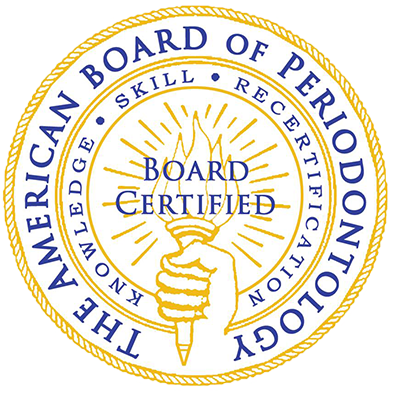Healthy Enamel Practices for a Healthy Oral Lifestyle
One crucial component of a healthy smile is tooth enamel. This month’s newsletter will explore everything you need to know about tooth enamel, from its function and how it decays to ways to protect and possibly restore it. By understanding proper enamel practices, you can ensure a robust and beautiful smile for years to come.

What is Enamel?
Tooth enamel is the hardest substance in the human body, even harder than bone. The thin outer layer of your teeth serves as the primary defense against the everyday challenges your teeth face, such as chewing, biting, and the occasional exposure to acidic foods and beverages. Enamel is semi-translucent and can range in color from light yellow to greyish-white. Beneath this sturdy exterior lies dentin, which is softer and more susceptible to decay, making enamel an essential barrier.
What Does Enamel Do?
The primary function of tooth enamel is to protect the inner layers of your teeth, including dentin and pulp, from plaque and bacteria that cause decay. Enamel also acts as an insulating barrier, shielding the teeth from potentially painful temperatures and chemicals. Without enamel, your teeth would be incredibly sensitive, making everyday activities like eating and drinking excessively uncomfortable.
Does Enamel Decay?
Despite its remarkable strength, enamel is not indestructible. Enamel decay begins when acids produced by bacteria in plaque begin to erode its surface. These acids are often the result of consuming sugary and starchy foods. Poor oral hygiene, such as insufficient brushing and flossing, also contributes to plaque buildup and subsequent enamel deterioration.
Factors like chronic dry mouth (xerostomia), acid reflux, and eating disorders can exacerbate enamel erosion. Frequent exposure to acidic foods and beverages, such as citrus fruits, soda, and wine, can weaken the enamel further. While fluoride in toothpaste and drinking water can strengthen enamel, it’s essential to be proactive in minimizing these harmful exposures.
What Happens to Oral Health When Enamel Erodes?
When enamel begins to erode, it can lead to several oral health problems. The most immediate consequence is increased tooth sensitivity. As the enamel wears away, the underlying dentin, which contains tiny tubules leading to the tooth nerves, becomes exposed. This can result in sharp, shooting pains when consuming hot, cold, or sweet foods and drinks.
Furthermore, enamel loss can lead to the development of cavities, also known as dental caries. Cavities are permanent damaged areas that develop into tiny holes in the teeth. If left untreated, they can expand and affect deeper layers of the teeth, leading to severe toothaches, infections, and even tooth loss.
Aesthetic concerns are also a significant issue. Enamel contributes to teeth's whiteness; its erosion can cause teeth to appear yellow or discolored because the underlying dentin is darker. This discoloration can be challenging to address with regular whitening treatments.
Enamel erosion can also contribute to rough, uneven tooth surfaces and an increased risk of cracks and chips. These consequences make everyday oral functions more difficult and can significantly impact one's overall quality of life.
Can Enamel Be Restored?
While enamel itself cannot regenerate once lost, it can be remineralized to some extent. Remineralization is the process of restoring important minerals to the enamel, thereby strengthening it. Fluoride is a crucial component in this process. Regular use of fluoride toothpaste, drinking fluoridated water, and professional fluoride treatments applied by your dentist can all help protect and strengthen your remaining enamel.
Dental products containing calcium and phosphate ions can also aid remineralization. These substances work similarly to fluoride, keeping the enamel hard and resistant to acid attacks. In cases of significant enamel erosion or cavity formation, restorative dental procedures are necessary. These can include:
- Dental Bonding: A tooth-colored resin is applied to restore the shape and function of the tooth.
- Crowns: A crown can be placed over a damaged tooth to protect it and restore its appearance and functionality.
- Veneers: Veneers are custom-made porcelain shells designed to cover the tooth's front surface, providing protection and a visually appealing look.
While these treatments can restore teeth's functionality and appearance, they should be complemented by a robust oral hygiene routine to prevent further erosion.
Proper Enamel Practices or Your Oral Hygiene
Here are some steps you can take to protect and strengthen your enamel:
- Maintain Good Oral Hygiene by Brushing your teeth at least twice a day with fluoride toothpaste and flossing daily to remove plaque and food particles.
- Use a Soft-bristled Toothbrush: Hard-bristled toothbrushes can erode enamel over time. Use gentle strokes when brushing to avoid damaging the delicate enamel.
- Limit Sugary and Acidic Foods and Drinks: Reduce consumption of sugary snacks, sodas, citrus fruits, and other acidic foods. If you indulge, try rinse your mouth with water afterward to neutralize acids.
- Drink Plenty of Water. Water stimulates saliva production, which helps wash away food particles and neutralize harmful acids.
- Chew Sugar-free Gum: Chewing sugar-free gum increases saliva production, which in turn helps to clean and protect your teeth.
- Avoid Brushing Immediately After Eating Acidic Foods: After consuming acidic foods or beverages, wait at least 30 minutes before brushing your teeth. This waiting period allows your enamel to re-harden after being softened by acids.
- Use Mouthwash with Fluoride: Incorporating fluoride mouthwash into your daily routine can provide extra protection for your enamel.
- Regular Dental Checkups: Visit your dentist regularly for professional cleanings and examinations. Early detection of enamel erosion and other dental issues can prevent more severe damage and make treatment more effective.
- Consider Dental Sealants: Dental sealants are thin, protective coatings applied to the chewing surfaces of the back teeth. They can help prevent cavities and enamel erosion, especially in children and teenagers.
Summary
Understanding and practicing proper enamel care is pivotal for maintaining a healthy, beautiful smile. Though enamel is incredibly tough, it is not invulnerable. You can protect your enamel from unnecessary damage by being proactive with your oral hygiene and making mindful choices regarding your diet and habits.
Remember, enamel cannot be regenerated once lost, but with diligent care and professional treatments, it can be strengthened and preserved. If you have concerns about your enamel or any other aspect of your oral health, please do not hesitate to contact our office. We are here to support you in every step of your dental journey.




















